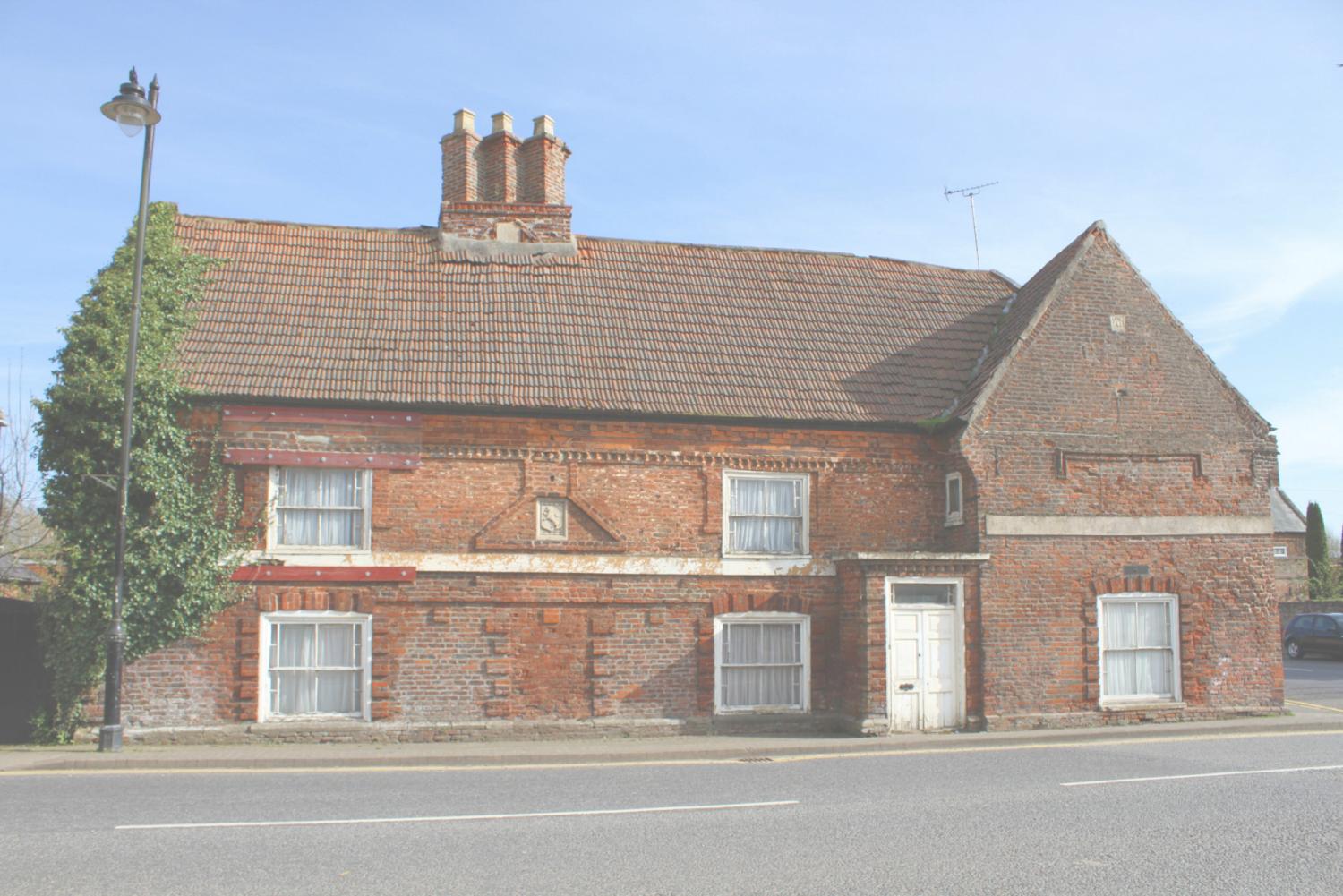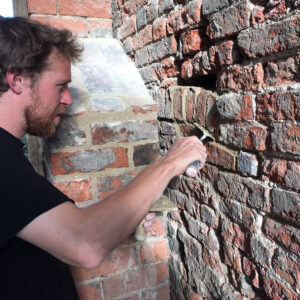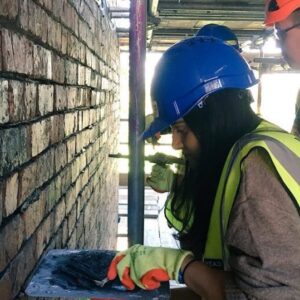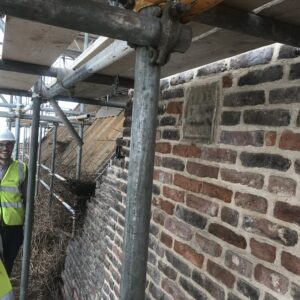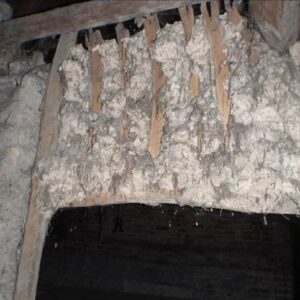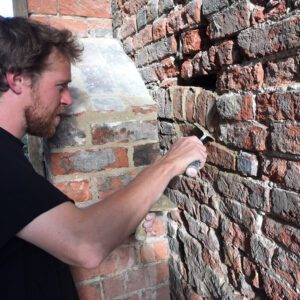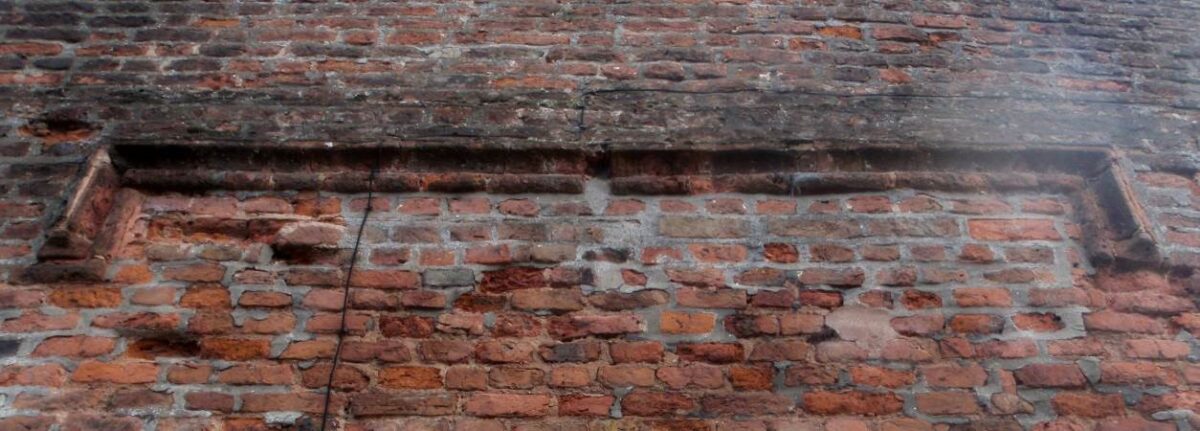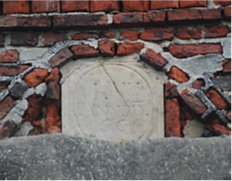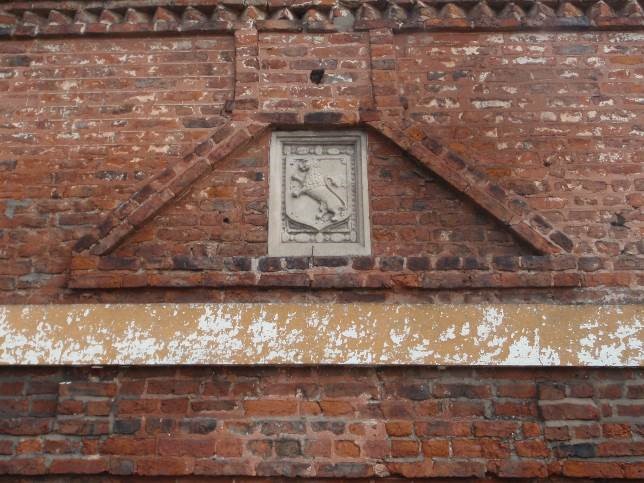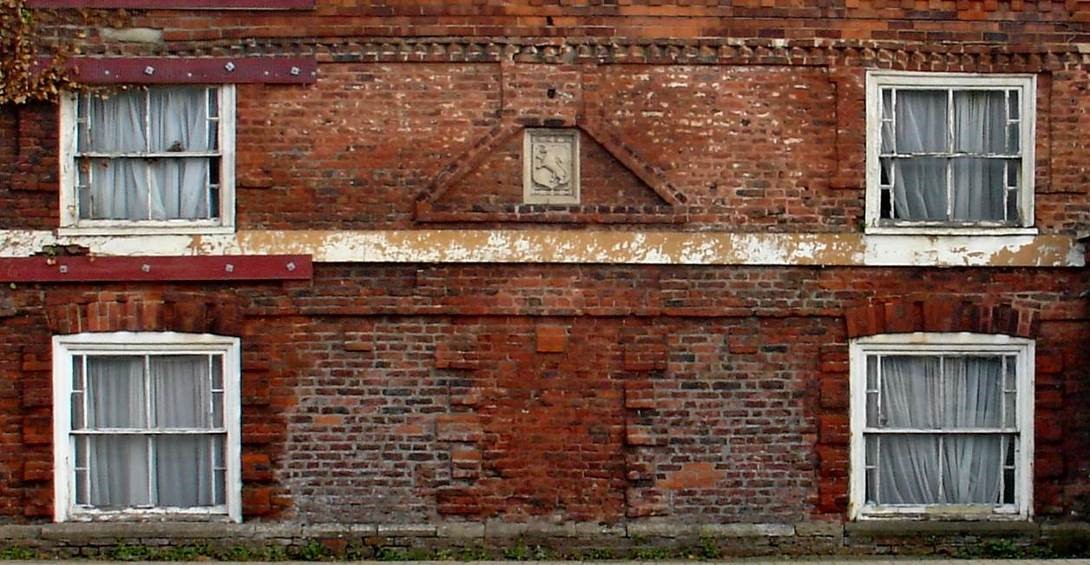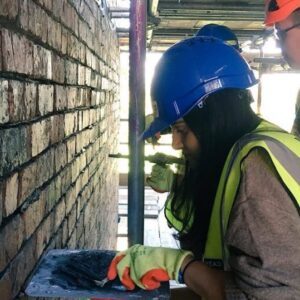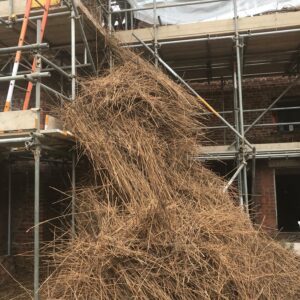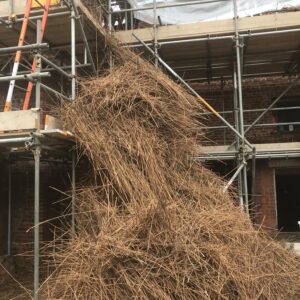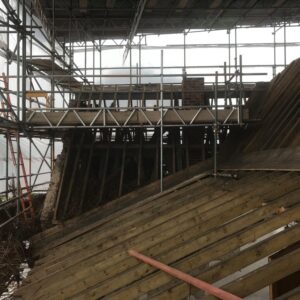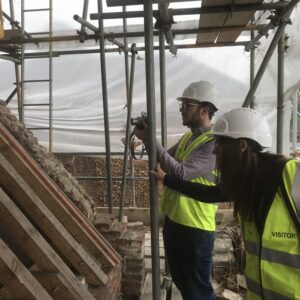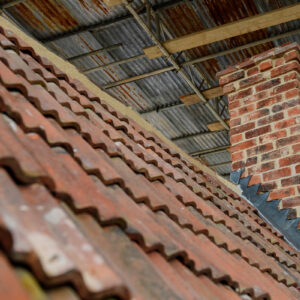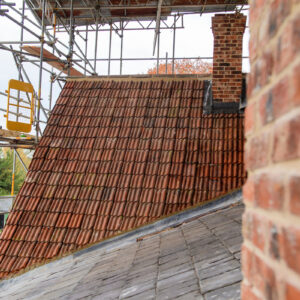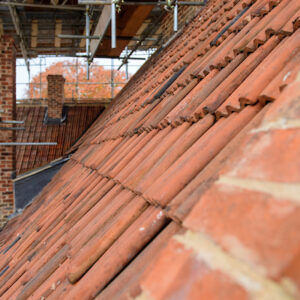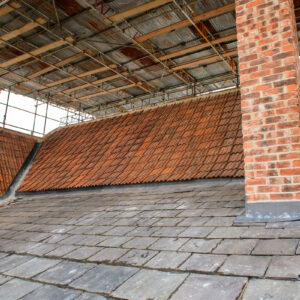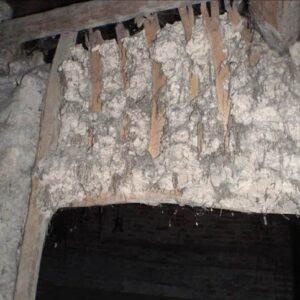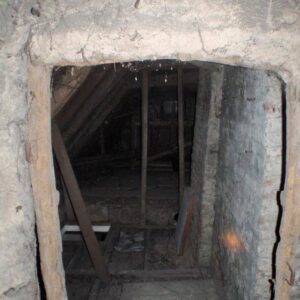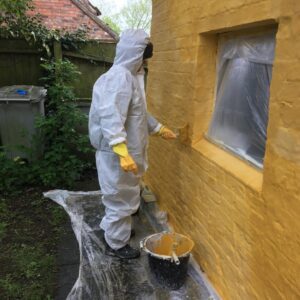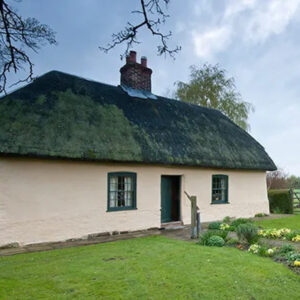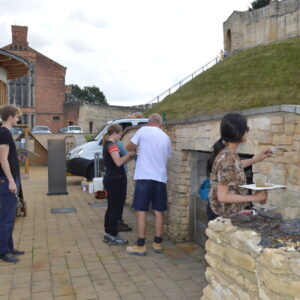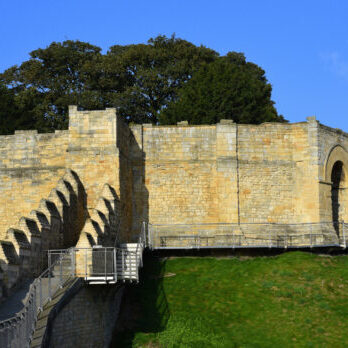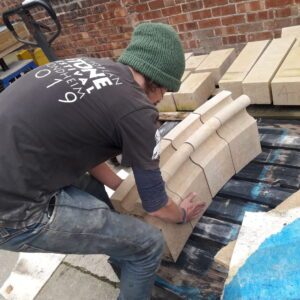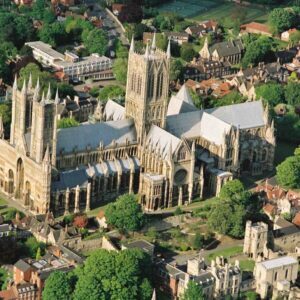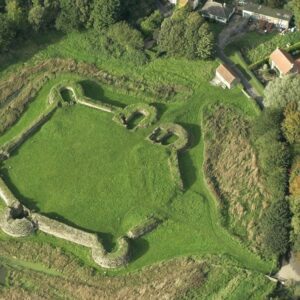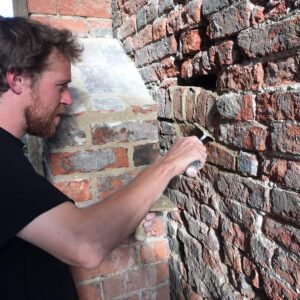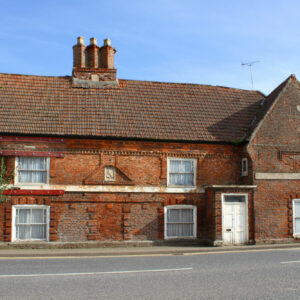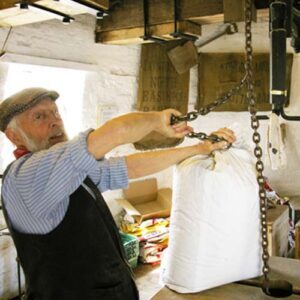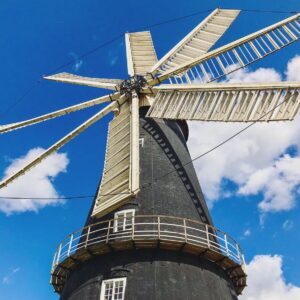Business building
The Old King’s Head
The Old King’s Head is a Grade II Listed building and is a rare example of a 16th century medieval coaching inn, located in Kirton. The Old King’s Head is an ‘L’ shaped building and is built in the Fenland Artisan Mannerist Style.
The building was named the ‘King’s Head’ after building works had been completed, it is possible this name was given to celebrate the coronation of Charles II 1660.
Heritage Lincolnshire bought the Old King’s Head in 2017, major repairs were carried out on the site and it will be opened to the public as a B&B, Café and community space.
Skills used at the Old King's Head
Brick
The Old King’s Head is an interesting building as it was built out of brick, this was unusual of its time as brick was expensive during the medieval period. During this time high status buildings were built out of brick including the nearby Boston Guildhall and Tattershall Castle. The brickwork at the Old King’s Head used the English bond pattern and is formed so that the external face of the wall shows alternating courses of headers (end of the brick) and stretchers (the side) of the brick.
The Brick would have been made on site, during medieval times, the clay for making brick was often kneaded by workers using their bare feet. The clay was then shaped into a brick by pushing it into a wooden frame on a table. It was then covered with straw or sand to prevent the clay from sticking. After excess clay was off with a stick the brick was removed from the frame.
Building in the past, whether professional or amateur, was predominantly a male task, but it would be wrong to consider it exclusively masculine. Women were involved in Lincolnshire brick making in the fifteenth century. Often women in rural communities would routinely assist in tasks such as the preparation of thatch or earth for walls (Slocombe,2012:13).
Remodelling
The Old King’s head still retains much of its historic fabric however the building has had several phases of re-modelling over the centuries adding to its character and story:
This image illustrates the remains of a decorative hood which can be found on the gable end of the 1st floor. This type of moulded brick design is not present anywhere else on the building exterior and is likely to be a 16th century survival from the original phase of the building rather than a later addition. Most of it has been removed during later alterations.
Restoration works
The Old King’s Head was purchased by Heritage Lincolnshire (HTL) in 2017 as one of their building preservation trust projects. One of the reasons that HTL purchased the building was because they identified it as ‘high risk’ as part of their Lincolnshire Heritage at Risk Project.
The building had been vacant for many years and was at more risk of damage to the historic fabric. Images taken before renovation work took place illustrates why the Old King’s Head needed to be renovated.
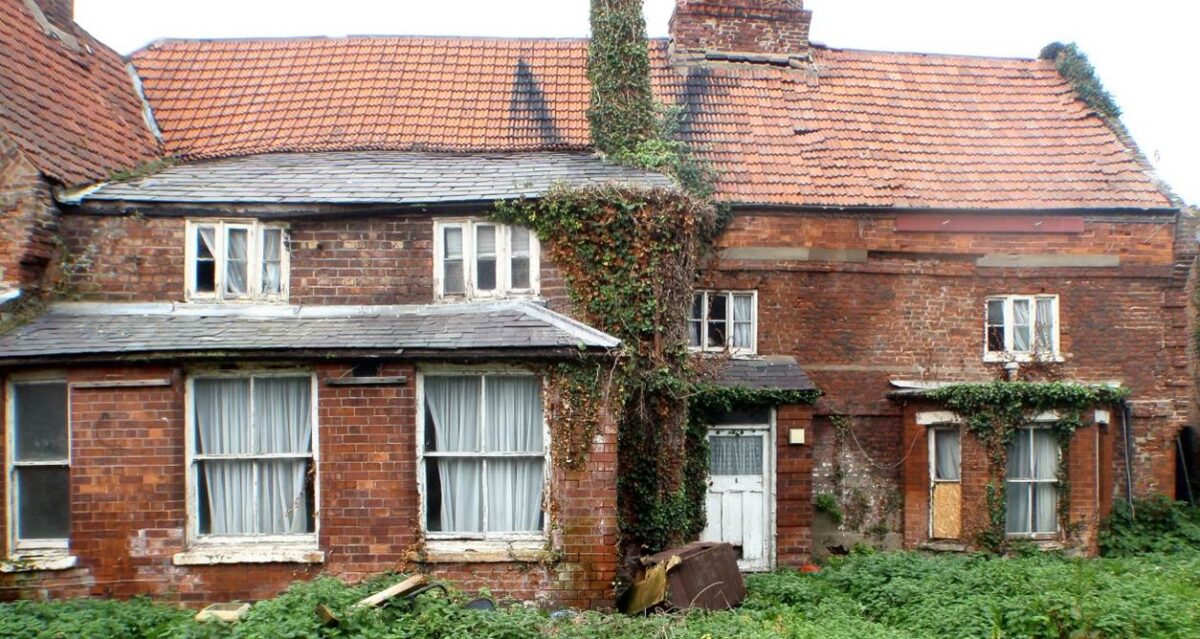
Vegetation
A vast amount of vegetation was caused by damaged rainwater goods, damaged roof as well as being vacant which meant that nobody looked after the building. Vegetation growth allows vast amounts of water to seep into the building fabric such as the bricks and mortar which can lead to substantial damage. During restoration works the vegetation was carefully removed to ensure minimal loss of the historic fabric of the building.
Moisture in bricks
Build-up of excess water and salt – An accumulation of salt (white patches on bricks) is apparent on different areas of the masonry. The image shows that the many areas affected contain excess water including vegetation and windows in need of repair. Excess salt is exhibited to both the left and right of the door.
20th century repairs using cement – Lime mortar is a traditional building material which allows water to travel through it and evaporate. In modern times cement has been used to replace traditional mortar, however water cannot travel through it. The water then seeks to travel and evaporate through the brick, causing damage to brick which often leads to the face of brick falling away. Unsympathetic pointing using cement can be seen near the top window on the right-hand side of the building.
Removal of thatch
Thatch was the original roof material used when constructing The Old King’s Head, a pantile roof was later added do the building. During HTL’s restoration of the site, the remaining thatch was investigated, and it was revealed that the oldest layer of thatch dated back to the building’s construction.
In July 2019 it had been determined that the thatch roof discovered at The Old King’s Head was to be removed and the historic timber roof structure retained.
The full extent of the thatch was previously unknown due to restricted access within the roof void. When fully uncovered it was found to be thick with detritus and was not fixed back in any way. Ultimately the dirt and dust accumulated would continue to disperse and filter down into the rooms below and the loose thatch would dislodge over time and impact on the tiled finish and eaves.
Other concerns with retaining the thatch were the risk of nesting vermin and the potential risk of fire spreading through the roof space. The thatch was removed in sections so that works to new roof structure could continue.
All was not lost. A section of sound thatch was removed from the slope and is now displayed at the property, within the café.
The new roof
Mud and stud
The mud and stud building tradition is a type of earth construction exclusive to Lincolnshire, England. It would have been one of the most common building methods in medieval Lincolnshire, although The Old King’s Head is built out of brick some mud and stud can be found within the building.
Mud and stud is used as a partition wall within the attic space at the Old King’s Head, at some point two doors were very roughly blocked up with mud and lime washed over. The finish was very rough compared with the rest of the wall, which has been skimmed.

